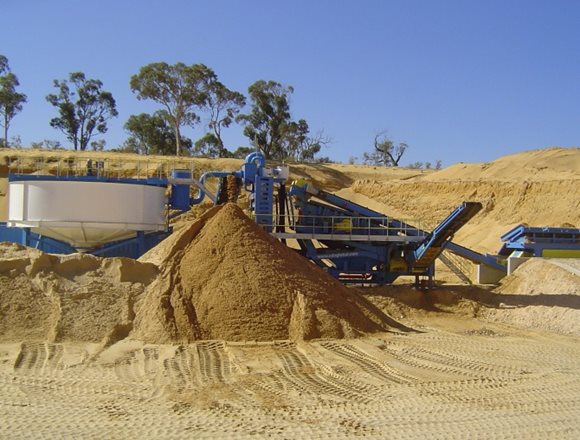Tonnage
120TPH
Material
Sand & Gravel, Claybound Aggregates, Quarry By-Products
Output
0-6mm Sand
THE CHALLENGE
In November 2006 a CDE Sand Washing Plant was installed with the Sampete Group based in Wallerfield Armia, Trinidad. Before this installation the raw material had been stockpiled as waste, comprising the efficiency of several limestone quarries in the east. It provided a considerable challenge for traditional systems as it is overburden mixed with clay-bound material which is extremely plastic in nature. The feed is heavily contaminated and often up to 50% of the minus 5mm material can be less than 75 microns.

THE SOLUTION
Sand slurry leaving the primary screen is piped to the new CDE compact sand plant which is rated at over 100tph. This plant has no trouble in handling the high clay volumes (up to 50% in the sand fraction) in the feed. Slurry is fed directly into the sump and is then sent to the custom sized hydrocyclone by a Warman pump. The silt cut point can be set to suit customer’ specific product requirements but here the sand consistently contains less than 3% minus 75 microns. From the base of the hydrocyclone the sand is fed on to the high efficiency dewatering screen and is discharged over a rubber-lined chute to a conveyor for stockpiling at less than 12% moisture content. The wastewater containing the clays pass directly to an 8m diameter high-rate thickener complete with a fully automatic Polyelectrolyte dosing station for further treatment.
Wastewater treatment is the most crucial element of the entire plant and often the key challenge for the efficiency and productivity. Given the dirty nature of the feed many traditional systems would demand larger volumes of water which is not always practical in quarry operations.
THE RESULTS
Currently the complete plant operates at up to 120tph which averages approximately 13 tons per hour of waste solids. Polyelectrolyte dosing is carefully monitored to ensure correct sludge settlement / comparison without any risk of flocculent carryover in the recycled water. This water can then be recycled to the main reservoir or back to the sand plant. The thick sludge (like yogurt) is sent to a settling pond for further settlement via a Warman pump. Final solid content in the sludge approximately 50%. Only 15% top up water is required for the plant to run continuously.




